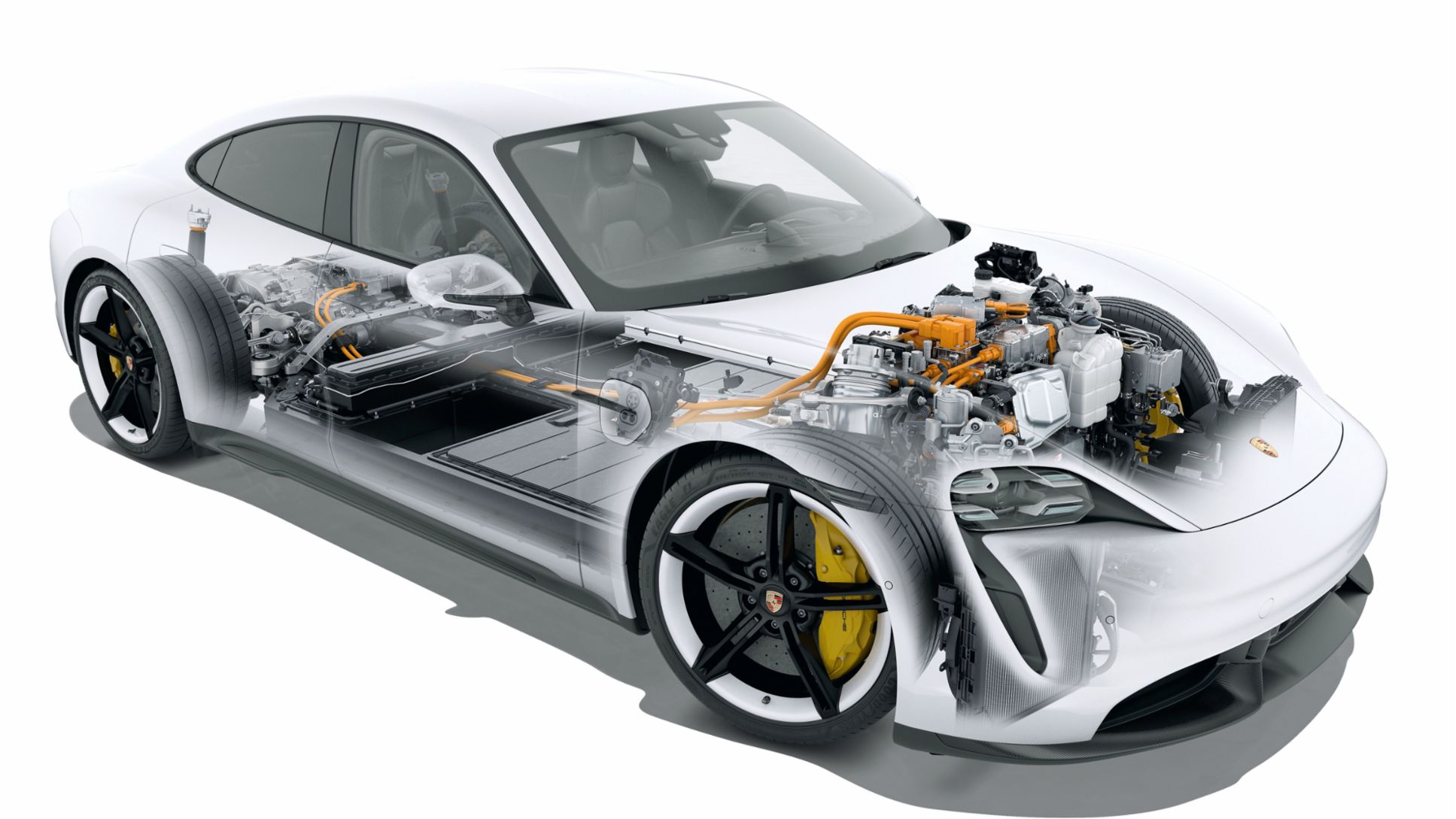
Powerful batteries are the central element of electric vehicles
Technology continues to evolve and is expected to make further progress when it comes to capacity, charging capacity, safety, and service life. Porsche is directly involved in current developments through the Cellforce Group and Group14 Technologies.
High energy content, high performance, long service life, maximum safety—all at the lowest possible cost: Batteries in electric vehicles have to meet many requirements, which the dominant lithium-ion technology is already succeeding at quite well. Further improvements can, however, be made to almost all of its parameters, and researchers and industry are currently working intensively on doing just that. At the same time, potential successors are already lining up. It is no coincidence that lithium-ion batteries dominate today’s market: Lithium atoms are particularly keen to emit one of their three electrons, and lithium is also the lightest metal. This makes the element a popular raw material for batteries.
“Pure lithium is the ideal active anode material in terms of energy density,” says Dr. Stefanie Edelberg, Specialist Engineer Battery Cell at Porsche Engineering. “For safety reasons, however, graphites are currently used primarily as active anode materials that can absorb lithium ions.” In addition, the charging capacity of the batteries is very high and their price is relatively low. Added to this is their long service life: “1,500 to 3,000 full charge cycles until a residual capacity of 80 percent is reached does not present a problem,” says Dr. Falko Schappacher, Commercial and Technical Director of MEET Battery Research Center at the University of Münster (WWU). Car battery service lives of up to one million kilometers are now being predicted.
Anode optimization
Because lithium-ion technology is a multi-component system, there are many ways to optimize it further. Take, for example, the anode: Graphite is currently used as an active anode material. Silicon is an interesting alternative to this because it offers a storage capacity that is ten times higher. “Silicon anodes would significantly increase the total capacity of the lithium-ion battery,” as Schappacher underscores. Edelberg also points out the advantages: “Silicon is of particular interest because it exhibits the second-highest storage capacity in terms of weight after lithium, which allows for cells with very high energy densities. What’s more, it is the second most common element in the earth’s crust.” Cells with a high fast-charging capability and which can be charged from five to 80 percent in less than 15 minutes are indeed feasible.
“However, when lithium is absorbed, the silicon particles expand by 300 percent, resulting in mechanical stress in the material and electrode,” says Schappacher. If this were to damage the electrode surfaces, the service life of the battery would also be impaired. “The biggest leverage in terms of energy density is attained by using pure silicon active material, but then you also have to contend with the worst downsides in terms of service life,” says Edelberg. Nevertheless, intensive work is being carried out on anodes with a very high proportion of silicon of up to 80 percent. This is the path that Cellforce (see box), for example, is following in conjunction with Porsche.
More nickel in the cathode
Intensive work is also underway on optimizing the active materials for the cathode. The important thing in this case is a combination of a large charging capacity and a high electrochemical potential of the material. At present, lithium-nickel-cobalt-manganese-oxide (NCM) in a ratio of 6:2:2—in terms of the parts nickel, cobalt, and manganese—is most frequently used in electromobility in Europe.
In the future, nickel’s share is likely to increase, while cobalt and manganese will be used to a lesser extent.
Information Source: Read More “
Energy Monitors , Electric Power , Natural Gas , Oil , Climate , Renewable , Wind , Transition , LPG , Solar , Electric , Biomass , Sustainability , Oil Price , Electric Vehicles,


